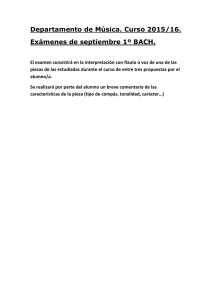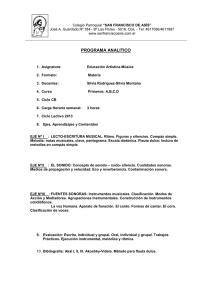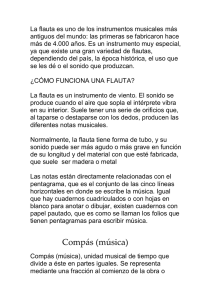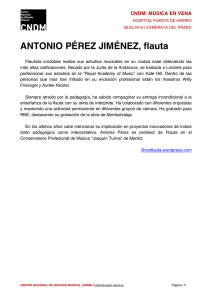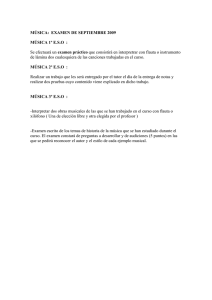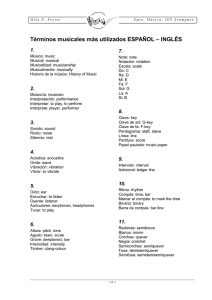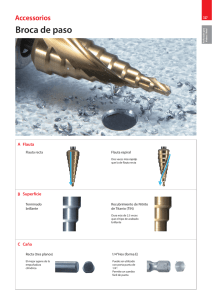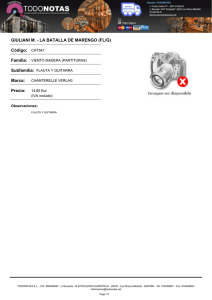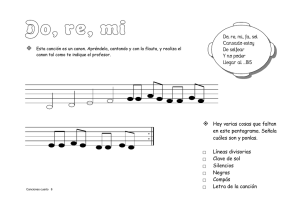Can you answer these questions?
Anuncio
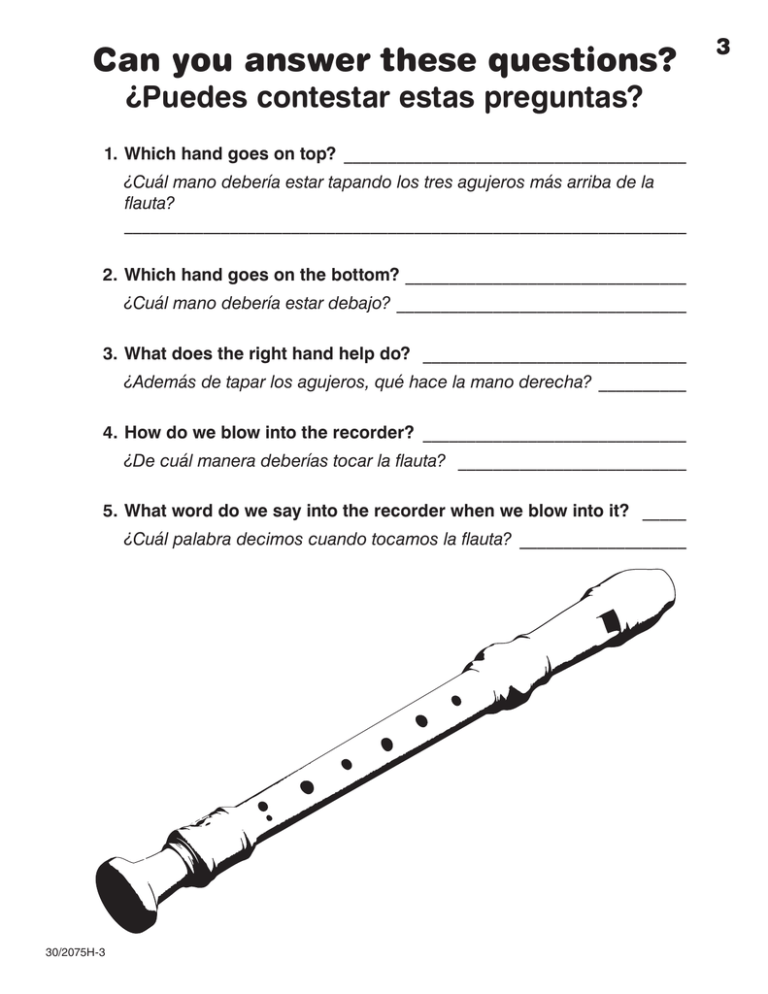
Can you answer these questions? ¿Puedes contestar estas preguntas? 1.Which hand goes on top? ________________________________________ ¿Cuál mano debería estar tapando los tres agujeros más arriba de la flauta? ________________________________________________________________ 2.Which hand goes on the bottom? _________________________________ ¿Cuál mano debería estar debajo? __________________________________ 3.What does the right hand help do? _ ______________________________ ¿Además de tapar los agujeros, qué hace la mano derecha? ___________ 4.How do we blow into the recorder? _______________________________ ¿De cuál manera deberías tocar la flauta? _ __________________________ 5.What word do we say into the recorder when we blow into it? _ _____ ¿Cuál palabra decimos cuando tocamos la flauta? ____________________ 30/2075H-3 3 4 The Basics Lo básico The Staff, Note Names and Rhythms El pentaframa, las notas y los tiempos Treble Clef Staff Measure Double Bar 4 &4 Time Signature Bar Lines Staff: The five lines used to notate music. El pentagrama: Las cinco líneas y cinco espacios donde se escribe la música. Treble Clef: The “G” clef used for recorder music. La clave de sol: La “G” clave usado para la música para la flauta dulce. Time Signature: Tells us how many beats per measure and what kind of note gets one beat. El quebrado del compás: Nos dice cuantos tiempos tenemos por compás y que tipo de nota recibe un tiempo. Measure: A section of music marked by bar lines El compás: Una sección de música demarcada por barras. Double Bar: Indicates the end of a piece of music. La doble barra: Indica el fin de una pieza de música. Note Names & w w w w w w w w C D E F G A B C w w w w D E F G En español las notas se llaman Do, Re, Mi, Fa, Sol, La, y Si. En inglés, las notas musicales se nombran con la letras del alfabeto: C, D, E, F, G, A y B. 30/2075H-4 © 2005 H i M i P di i i f h L C i
